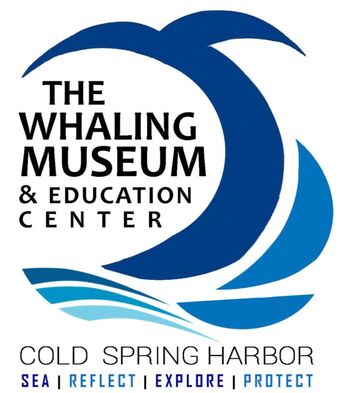|
By Baylee Browning Collections and Exhibits Associate The museum recently received a clay pipe with a special connection to the Cold Spring Harbor community. Nan R, who donated the pipe, shared her story about how it was discovered: "In 1965 my parents purchased the house at Turkey Lane in Cold Spring Harbor. Lovers of rescuing old houses, they intended to restore it to a functional abode for our family of six. They had been told it once had belonged to a whaling captain, which is most likely a stretch, as the house is not of the size nor quality typically associated with a sea captain. Be that as it may, we set out to make the dilapidated house habitable again. First on the list was to make sure there were no varmints hiding anywhere. To this effort I, being the smallest and most gullible 9-year-old, was sent into the crawl space under the kitchen to see if there was anything under there. While crawling around on my belly with a dim flashlight my beam hit a white object amid the dirt and rubble. I pocketed the object and retreated as quickly as I could wiggle out of the creepy space, thoroughly spooked even though I hadn’t encountered a single varmint. Once I felt secure in the knowledge that my parents would let me keep the object (it did have a naked lady on it after all!), my mom told me it was the bowl end of an old clay pipe. It has stayed with me, neatly boxed, tucked away, and forgotten for nearly 60 years. I recently came across this quirky little piece of Cold Spring Harbor’s history gone astray at the bottom of a long-ignored box and felt it should go back to whence it came." What Nan found under her kitchen floor was the stummel part of a pipe, the largest part of a pipe where the tobacco was lit. With the help of Robert Hughes, the Huntington Town Historian, museum staff are able to share details about the house under which this remarkable find was recovered. According to a Building-Structure Inventory form from 1979, this house was once the Henry Roger’s Farm House, built somewhere around or before 1839. It has been the home for families like Nan’s for quite some time. From what we can tell, the main structure of the house is a wonderful time capsule in itself. It is “a fine example of its period and almost entirely unaltered” according to the report, with shingles and hewn beams. “The house as it now stands is important for its multiple association with the Roger’s family, the earliest and largest owners in the valley through which Turkey Lane runs.” Though this was likely a farmhouse originally, given the maritime nature of our community, I would not be surprised if there was a sailor living here at some point in the past. He probably spent some time wondering where his beautiful pipe went! Nan is not the only local to have brought our museum clay pipes as donations to our collection. The following two examples were donated to the museum by Guy Cozza in 1997; they had been found on the nearby property of the Cold Spring Harbor Laboratory. For more information on historic clay pipes, start with these two posts:
“Clay Trade Pipes” published by the Peach State Archaeological Society: https://peachstatearchaeologicalsociety.org/index.php/12-pipes/157-kaolin-clay-trade-pipes “White Ball Clay Pipes” published by the University of Virginia: https://explore.lib.virginia.edu/exhibits/show/layersofthepast/multiplenarratives/imported_pipes
0 Comments
Your comment will be posted after it is approved.
Leave a Reply. |
WhyFollow the Whaling Museum's ambition to stay current, and meaningful, and connected to contemporary interests. Categories
All
Archives
May 2024
AuthorWritten by staff, volunteers, and trustees of the Museum! |






 RSS Feed
RSS Feed
